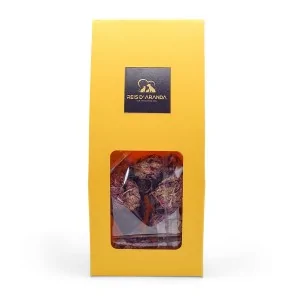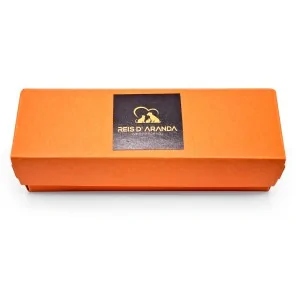The Tornjak originated from genetically homogeneous, almost extinct, indigenous shepherd dogs. These dogs have...
THE MAIN BREEDS OF DOMESTIC RABBITS
Did you know that there are dozens of breeds of domestic rabbits?
These breeds (in many cases, extremely rare) are separated into the following groups according to size:
Dwarf / Medium / Giant
We have all heard about the "toy rabbit", the "micro toy", the "belier" or the "angora" but do they really exist? Are they as they have been presented to us by aviaries, uninformed internet blogs or large pet breeding farms?
No. The vast majority of information you may have read before this article is false and/or biased information.
Below, we will introduce you to the main breeds of domestic rabbits:
DWARF RABBITS
Within the term "dwarf rabbits" we can find a great variety of breeds which are very different in size, color, morphology and fur, but is there a breed called "dwarf rabbit"? No. There is no breed called "dwarf rabbit" and if someone wants to sell or give you an animal under this name (just like that) they are trying to sell or give you a mongrel animal.
Dwarf rabbits are so called for one reason: they carry the gene for dwarfism. This gene, as a general rule, produces small, compact animals, with a flat face and shorter ears than usual (depending on the breed), as well as malformations associated with it: "peanuts" ("double dwarfs" or "peanuts"), "faders", "max factor", "hippos"...
Although, many specimens belonging to the dwarf breeds do not carry this gene, about which you can read more in the article:
THE DWARFISM GENE IN RABBITS.
So, what are the main dwarf rabbit breeds?
DUTCH DWARF
TheNetherland Dwarf(or "Netherland Dwarf") is the smallest breed of dwarf rabbits in the world.They are often referred to as "toy rabbits", "super toy" or "mini toy" but they have nothing to do with each other, as these terms are commercial names to sell mongrels (article "THE TRUTH OF THE "TOY", "SUPER TOY" AND "MINI TOY" RABBITS).
With an approximate adult weight of 1kg (0.9-1.1kg) the Dwarf Dutchman is the most popular breed worldwide in terms of breeding; characterized by a very, very round and compact body, expressive and slightly protruding eyes, tiny ears and a tipsy and active character, it is, despite its popularity, an extremely complex breed to breed: low fertility, very small litters (1-3 rabbits), high infant mortality, jealous mothers... All these things, combined with the fact that they mature very slowly physically (up to 1 year) and that from the age of two months they go through an "ungraceful" stage (ungainly), make them an unprofitable breed that is bred more for love of the breed than for money.
As a pet, it is a good choice for families with older children (+ 10 years) and patient and affectionate people who pay special attention to socialization.
MINI LOP
The Mini Lop (also called "Miniature Belier") is the smallest lop-eared breed, with an adult weight of 1.5-1.6kg. Like so many other dwarf breeds, it has a short, compact body with particularly broad shoulders and hips, short legs and a flat, broad, voluminous head. This sweet and pleasant expression will make anyone fall in love with them, and all these factors have made them the most popular dwarf breed in homes as a pet.
It is a very healthy breed, with few documented cases of otitis and they usually breed litters of between two and five gazapos.
In the United States, we can find the "North American" line of this breed: the Holland Lop, which has even shorter ears and wider heads than the English Mini Lop.
It is a breed suitable for families with children of all ages because, despite their small size, they are strong and resistant.
TEDDY DWERG
The Teddy Dwerg (wrongly known as "Teddy Bear") is the smallest long-haired breed in the world, with an adult weight ranging from 800gr to 1,350kg (females under 1kg should not be bred, as this would put their health at risk).
This beautiful dwarf breed of German origin is characterized by a fine and soft coat (whose approximate length reaches 8cm) and tiny ears (4cm), as well as by its docile, sweet and sociable character. As far as fertility is concerned, their litters range from 1 to 5 rabbits (3 rabbits per litter being the most common).
In spite of their long coat and small size, the two diseases most associated with this breed are mainly linked to the dwarfism gene: the "peanuts" and the "fader", and it is not common at all for them to present malocclusion, intestinal arrest or sudden death. Most of the times, the diseases they can develop are the result of the owner's negligence: dermatitis (due to knots) and conjunctivitis (due to not taking care of the coat and eyes).
The Teddy Dwerg requires regular brushing to keep its coat and skin healthy and beautiful, as well as to reinforce the animal-owner bond.
This breed is great for families with children of all ages, as long as the adults and the little ones are committed to taking care of their coat.
TEDDY LOP
The Teddy Lop (also called "Teddywidder") is the hairiest lop-eared breed in the world, with an adult weight ranging from 1,200kg to 2kg (with the most common being between 1,500 and 1,850kg). They are very compact and muscular animals, with broad heads, slightly longer ears than the Mini Lop and short legs; they stand out for the strength of their thighs and the beauty of their coat, which has a length of between 8 and 10cm (the minimum allowed would be 6cm).
The Teddy Lop is a quiet, proud and sociable animal, they are very expressive and shyness or aggressiveness are not at all common in them, as well as diseases (there are no registered cases of otitis or deaths due to intestinal stoppages) being the most common the conjunctivitis due to neglect and, in the case of the gazapos, the most common are usually the "peanut" and the "fader" (both linked to the gene of dwarfism).
Likewise, females of this breed are usually good mothers (abandoned litters are rare and cases of cannibalism are extremely low) and the average number of babies born per litter ranges from 2 to 5.
The Teddy Lop is an ideal animal for families with children of all ages who wish to commit to caring for its coat, which is a little thicker than that of the Teddy Dwerg and easier to maintain. This breed is especially popular in the United States and France.
BELIER DWARF
The Dwarf Belier (also called "Dwarf Lop") is, perhaps, the best known lop-eared breed. They are often simply called "Belier" but there is no such breed called "Belier", but it is the name of a family of rabbits which we can read about in the article: "THE BELIER FAMILY".
The Dwarf Belier is the heaviest dwarf breed among domestic rabbits, with an adult weight of between 1.930kg and 2.381kg. It has a wide and powerful body, full cheeks, flat face, longer ears than the Mini Lop (more similar to the Teddy Lop) and a very calm and sweet character, ideal for families with small children.
It is one of the most minority breeds (scarce) in Spain, since the popularity is fully in its smaller version (the Mini Lop). Its litters are usually of 5 rabbits and it is a quite healthy breed, with few registered cases of genetic malformations or malocclusion.
MEDIUM SIZED RABBITS
Within "medium sized rabbits" we include all breeds larger than 2.5kg excluding the giants.
In this group, we find fur breeds, wool breeds, fancy breeds and consumer breeds but, despite the fact that their size may make some people uncomfortable (this being one of the reasons for the popularity of dwarf breeds), "medium-sized rabbits" can also be a great choice of companion in the home.
Some of these medium-sized breeds of domestic rabbits are:
ENGLISH ANGORA
The English Angora is one of the most popular medium-sized breeds in Europe and, without a doubt, the most beautiful.
This breed dates back to 18th century Turkey and has been selected and bred for the collection of its wool and subsequent transformation into clothing (scarves and sweaters) but, although its main purpose has been maintained to date, it is increasingly used as a companion animal. Weighing between 2.5 and 3.5 kg, this animal is sweet, submissive and extremely sociable. Its coat requires daily brushing and shearing (since it is not hair as such, but wool) every 3 months, leaving the head, hands, feet and tail untrimmed. The litters are usually composed of between 6 and 10 rabbits, being very attentive and affectionate mothers.
As far as health is concerned, this breed derives its diseases from the owner's own negligence and poor care of the coat, resulting in conjunctivitis, dermatitis, excess hair in the digestive tract and myiasis (parasitization by fly larvae in the ano-genital area, unable to be cleaned by excess hair or knots).
It is undoubtedly one of the best options for families of all types, as long as they do not forget to take them to the groomer and brush them regularly at home.
SPOT ESPAÑOL
With an adult weight of between 2.3kg and 3kg the English Spot (also called "Papillon" or "Butterfly") is a little known breed but increasingly popular for its energetic, fun and friendly character.
It is a fairly healthy breed with litters of approximately 6 gazapos and there are no diseases associated with them beyond sporadic cases of malocclusion.
Its pattern, similar to a Dalmatian, is very attractive and can be found in black, blue, chocolate and lilac.
The English Spot has long ears, arched back, sharp nose and rounded paws, as well as a short and dense coat. It is a breed recommended for families with older children (+ 10 years) or adults.
ENGLISH LOP
The English Lop ("English Belier") is one of the most curious breeds within the domestic rabbits, standing out for the great size and length of its ears (up to 81cm if we measure from the tip of one ear to the other in a straight line). This Victorian breed (as it emerged in the United Kingdom in the 19th century) was the first breed with droopy ears developed by humans.
Weighing 5.5kg, with short, dense fur, a tapering head and a long, slender body, this breed surprises everyone who meets it for the first time.
They are very fertile rabbits with large litters (between 8 and 12 kittens) with a good milk production and a great maternal instinct. They are generally calm animals, although they are not recommended for families with small children or novices because of the care required for their ears, which can develop lesions if the habitat in which they live is inadequate.
REX RABBIT
Weighing around 3.5-4kg, the "Rex" rabbit is nicknamed "the king of rabbits" for its extraordinary coat, extremely short, with intense and vibrant colors, the greatest quality of this breed is that it is hypoallergenic; "hypoallergenic" does not mean that it will not cause allergies to its owners, but that the probability of it doing so is much lower than other breeds, since its molts are very, very scarce. The fur on their pads is as short as that of the body, so they are more unprotected and are prone to pododermatitis.
The Rex rabbit is the fur breed par excellence, although it is increasingly used as a pet as is its dwarf variety (the Mini Rex) and they have litters of around 6-8 rabbits.
It is a breed suitable for families of all types, especially for those more sensitive (from the allergic point of view) to rabbit fur and dander (not to hay).
GIANT RABBITS
The giant breeds are very popular among the more rustic breeders, although little by little they are making their way into the homes of many families which, leaving aside the great size of these animals, are inclined to their great personality.
GIANT OF FLANDERS
The most famous and most popular breed of giant rabbit. The Flanders Giant emerged at the end of the 16th century from natural selection in Belgium and, not only its imposing size (6-11kg) and strength impress more than one, but its ears (about 20 cm long) are very characteristic.
They have a very thick and short coat, available in various shades: brown, black, grey, blue, fawn and albino and, although they are large and physically strong animals, they are quite delicate in health, being prone to pododermatitis, arthrosis, arthritis and heart problems; on the other hand, deaths from (accidental) falls are quite common, as well as spinal breaks.
They are very expressive animals and lack of shyness, but they must be well socialized from a very young age, otherwise they can become complex animals to handle and manipulate, and can do a lot of damage with their paws and incisors (especially to children and other pets).
They are recommended for people with large yards or gardens where they can exercise, as well as experienced adults.
CONCLUSION
As we have been able to see, the main rabbit breeds are very different from each other, they have fixed personalities associated to their breed, physical characteristics and specific needs that the owners when acquiring them (in whatever way) have to cover correctly, in pursuit of their welfare.
From Reis d'Aranda, we always bet for the responsible acquisition, either from a specialist ethical breeder or a pet protector. The responsibility of the owner and his commitment with his pet is essential.
Leave a comment
Log in to post comments
















